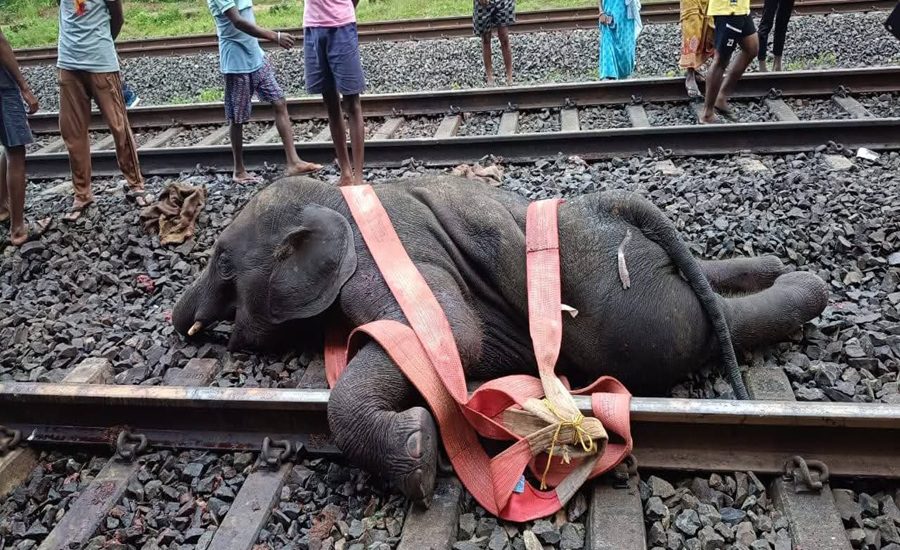Jhargram: In the pre-dawn hours near Jhargram’s Bashtola corridor, a Barbil–Howrah Jan Shatabdi Express tragically struck a mother elephant, her calf, and a sub-adult male—shuffle-stepping through a known elephant route. The rest of their herd refused to leave, standing silent guard over the bodies—revealing not just wildlife footage, but raw grief caught on camera. Shared by IAS Supriya Sahu, this heartbreaking scene demands more than sorrow—it demands action.
Supriya Sahu Highlights the Tragedy
IAS Supriya Sahu (1991 batch, of the Tamil Nadu cadre) posted the scene on X, writing – “The elephant herd refused to leave. As three of their own, a mother, her calf, and another died after a tragic train collision in Jhargram, West Bengal. They stood guard, grieving in silence. Not animals but a family in mourning. Beyond heartbreaking. We must do everything in our power to prevent such colossal loss.”
She went on to emphasize solution-based hope – “New-age solutions like the AI-powered early warning system implemented in Madukkarai, Tamil Nadu, show us the way forward using technology to alert railway authorities in real time and give elephants a chance to live. While no system can be foolproof and any system can develop an error but our efforts can save lives”
Sahu’s tone – equal parts mourning and motivation – turns bystanders into stakeholders.
Forest & Railway Officials Speak Out
DFO Umar Imam told The Media – “This is a usual elephant route, the movement of group of 25-30 elephants was verified near the area of the accident. We have a common group with rail- way and forest officials. I had asked them to keep speed in check in the area. Generally, they get alerted within minutes, but why did they not see this alert for three hours and caused this fatal accident?”
Nishant Kumar, Senior Divisional Commercial Manager, Kharagpur Division, said, “We have called for an inquiry about the speed, notification. We need to verify what the Forest Department is saying, we cannot offer further information before the investigation is over.”
AI Alerts Are the Way Forward
The incident has prompted urgent discussion on technology-backed mitigation: Tamil Nadu’s Madukkarai AI‑Warning System uses thermal and normal cameras installed on 12 towers across a 7 km stretch of elephant corridor. Since February 2024, it has recorded over 5,000 alerts and facilitated 2,500 safe crossings – without a single elephant death reported on those tracks. Alerts are triggered as elephants enter three concentric zones (yellow/orange/red), escalating notifications from forest staff to loco-pilots.
South Eastern Railway’s DAS-based intrusion detection trials on the Howrah–Mumbai route use fibre‑optic acoustic sensing to detect elephant footsteps and issue real‑time alerts. Initial test runs on key forested routes such as Saranda and Chakradharpur have shown promise.
Odisha’s Rourkela early warning system combines AI thermal cameras, drones, and local alert speakers to notify villages – and coordinate train delays when elephants are detected near tracks. A December incident using this system delayed a goods train, preventing a potential tragedy.
A Promise We Can’t Postpone
This tragedy – a grieving herd refusing to leave – goes beyond statistics. It’s a plea: elephant corridors are living highways, not mere green patches. When coordination fails, family units die. But technology—AI alerts, intrusion detection, DAS sensors in Dehradun and Odisha—invests hope and time back into their survival.
If systems with proven track records are scaled nationwide, we can transform these “death traps” into sentinel zones—not just crossings, but chances for life. The elephants didn’t stand guard in vain. Now it’s our turn to stand guard for them.
Also Read: Tribute to Green Warriors: Srinagar to Host National Forest Martyrs Day 2025 on September 11



























